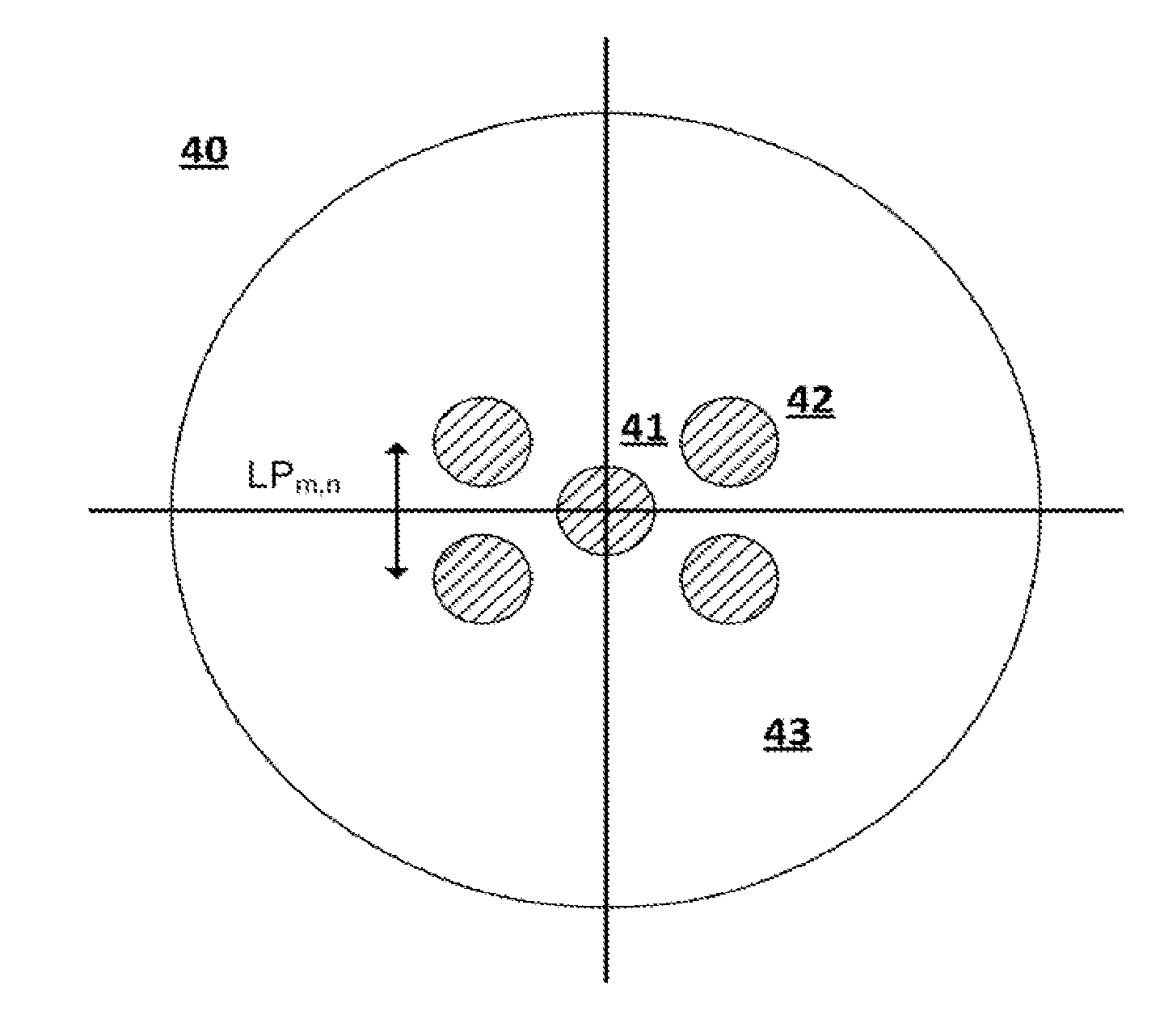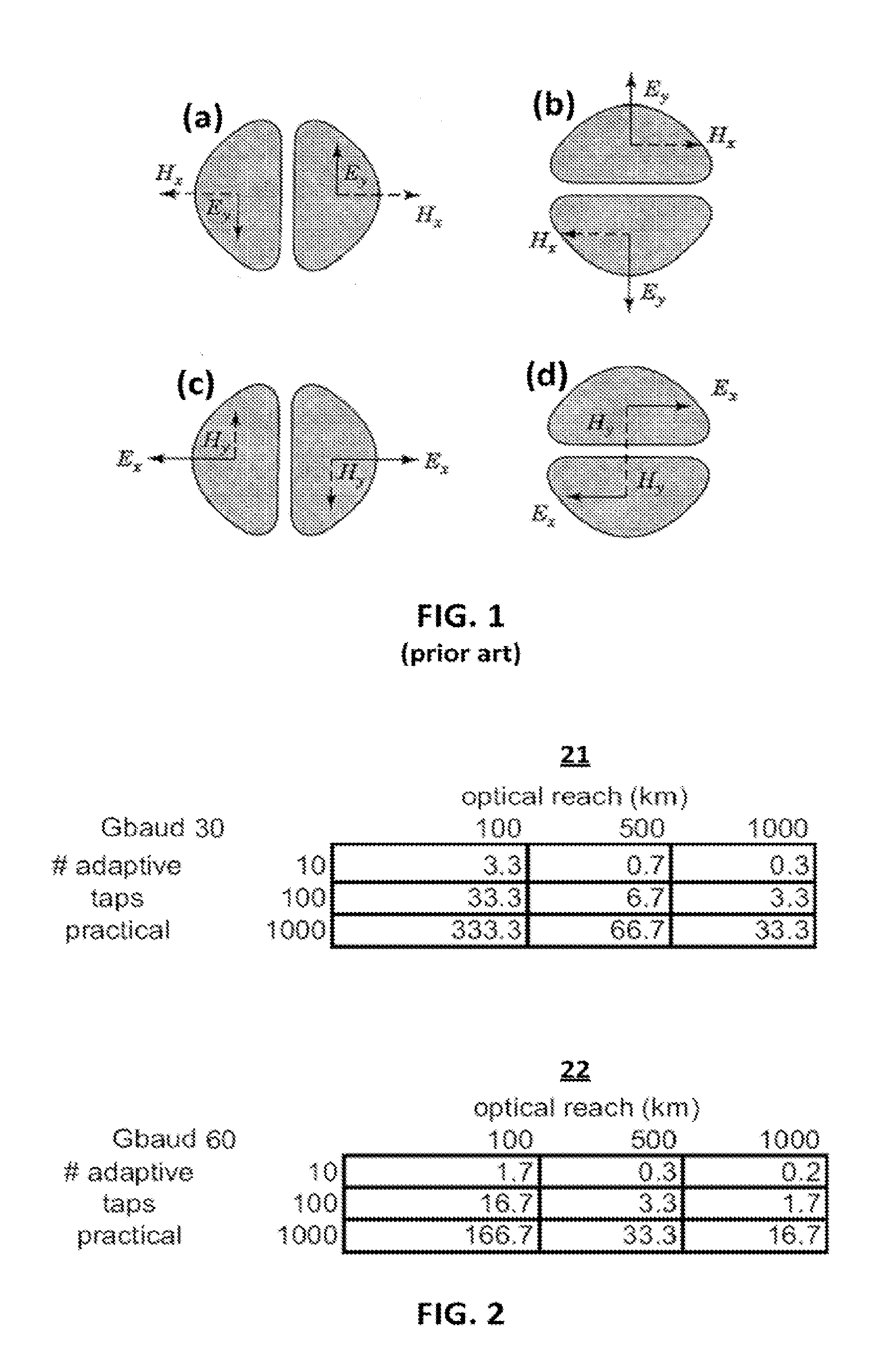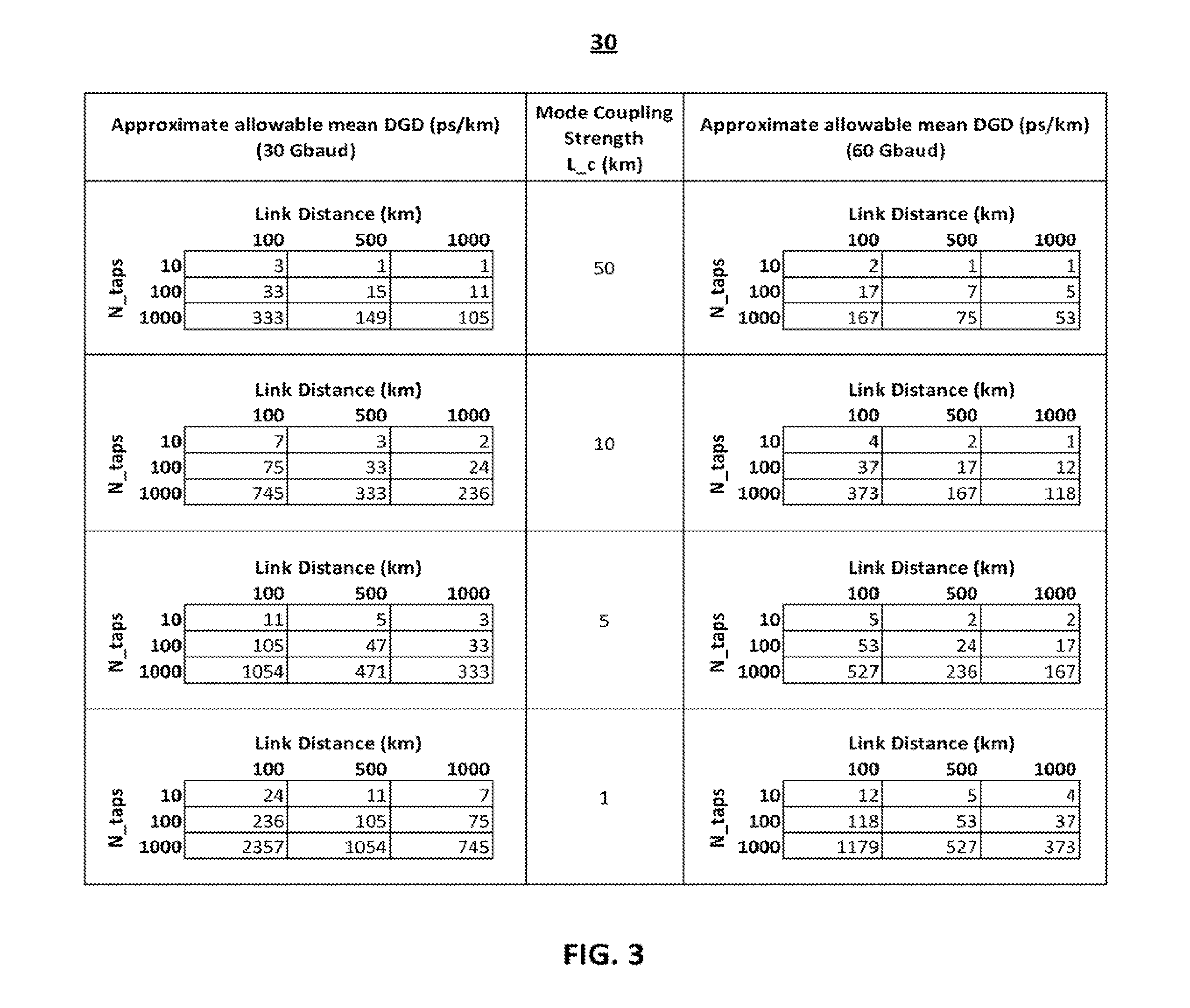Step-Index Few-Mode Fiber Designs For Spatial Multiplexing
a few-mode fiber and spatial multiplexing technology, applied in the field of fiber optics, can solve the problems of modal crosstalk, differential group delay (dgd), and difficult implementation of the framework, and achieve the effect of preventing coupling therebetween
- Summary
- Abstract
- Description
- Claims
- Application Information
AI Technical Summary
Benefits of technology
Problems solved by technology
Method used
Image
Examples
example 1.1
[0371]FIG. 23 shows a FMF refractive index profile 230 according to an aspect of the invention. The FMF comprises a graded-index core 231, a shoulder 232, a down-doped trench 233, and an outer cladding 234. The effective index of the guided LP01 and LP11 modes are shown as labeled black bars in index profile 230.
[0372]FIG. 24 is a graph 240 illustrating the group delay difference between the LP01 and LP11 modes as a function of wavelength.
[0373]FIG. 25 is a table 250 setting forth the specifications for fiber design 230.
[0374]As shown in profile design 230 and table 250:[0375]the graded-index core 231 has[0376]a radius of 7.7 μm,[0377]a start absolute index difference Δn=0.0081,[0378]an end absolute index difference Δn=0.0,[0379]an alpha parameter α=2.00;[0380]the shoulder region 232 has[0381]an inner radius of 7.7 μm,[0382]a thickness of 1.085 μm.[0383]an outer radius of 8.785,[0384]an absolute index difference Δn=0;[0385]the trench region 233 has[0386]an inner radius of 8.785 μm,[...
example 1.2
[0400]FIG. 26 shows a FMF refractive index profile 260 according to an aspect of the invention. The FMF comprises a graded-index core 261, a shoulder 262, a down-doped trench 263, and an outer cladding 264. The effective index of the guided LP01 and LP11 modes are shown as labeled black bars in index profile 260.
[0401]FIG. 27 is a graph 270 illustrating the group delay difference between the LP10 and LP11 modes as a function of wavelength.
[0402]FIG. 28 is a table setting forth the specifications for fiber design 280.
[0403]As shown in profile design 260 and table 280:[0404]the graded-index core 261 has[0405]a radius of 8.5 μm,[0406]a start absolute index difference Δn=0.0073,[0407]an end absolute index difference Δn=0.0,[0408]an alpha parameter α=2.09;[0409]the shoulder region 262 has[0410]an inner radius of 8.5 μm,[0411]a thickness of 1.61 μm,[0412]an outer radius of 10.11,[0413]an absolute index difference Δn=0;[0414]the trench region 263 has[0415]an inner radius of 10.11 μm,[0416]...
example 1.3
[0430]FIG. 29 shows a FMF refractive index profile 290 according to an aspect of the invention. The FMF comprises a graded-index core 291, a shoulder 292, a down-doped trench 293, and an outer cladding 294.
[0431]The effective index of the guided LP01 and LP11 modes are shown as labeled black bars in index profile 290. FIG. 30 is a graph 300 illustrating the group delay difference between the LP01 and LP11 modes as a function of wavelength.
[0432]FIG. 31 shows a table setting forth the specifications of fiber design 290.
[0433]As shown in profile design 290 and table 310:[0434]the graded-index core 291 has[0435]a radius of 7.47 μm,[0436]a start absolute index difference Δn=0.0139,[0437]an end absolute index difference Δn=0.0,[0438]an alpha parameter α=2.01;[0439]the shoulder region 292 has[0440]an inner radius of 7.47 μm,[0441]a thickness of 0.65 μm,[0442]an outer radius of 8.12.[0443]an absolute index difference Δn=0.0;[0444]the trench region 293 has[0445]an inner radius of 8.12 μm,[0...
PUM
 Login to View More
Login to View More Abstract
Description
Claims
Application Information
 Login to View More
Login to View More - R&D
- Intellectual Property
- Life Sciences
- Materials
- Tech Scout
- Unparalleled Data Quality
- Higher Quality Content
- 60% Fewer Hallucinations
Browse by: Latest US Patents, China's latest patents, Technical Efficacy Thesaurus, Application Domain, Technology Topic, Popular Technical Reports.
© 2025 PatSnap. All rights reserved.Legal|Privacy policy|Modern Slavery Act Transparency Statement|Sitemap|About US| Contact US: help@patsnap.com



